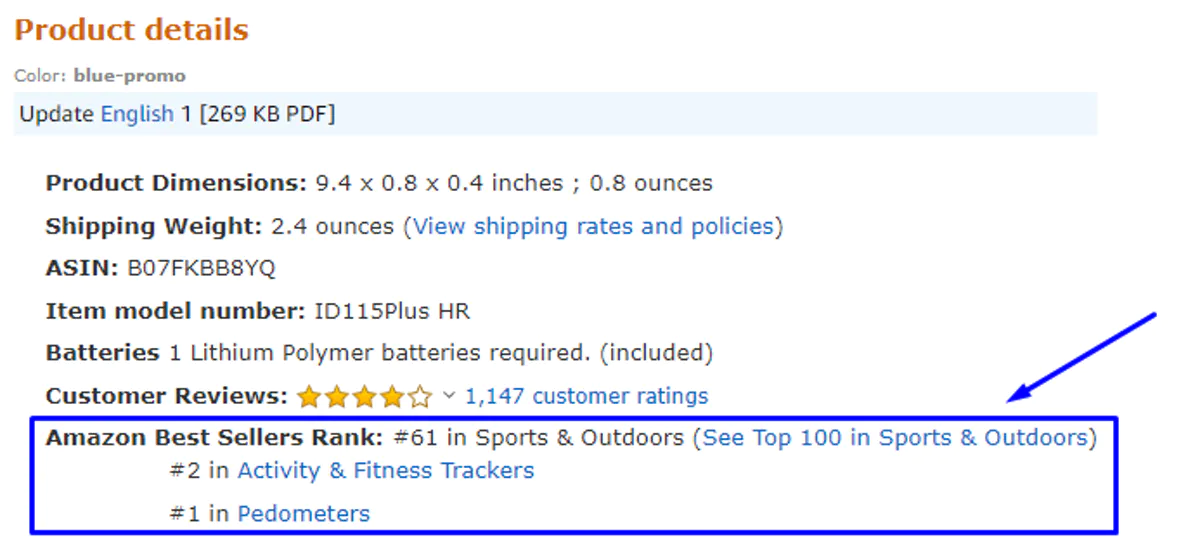When you sell on Amazon, you usually start by finding items around your house and listing them on Amazon. You might even start by walking into your local Walmart and start scanning items in the clearance aisle.
When you find a deal to flip, you are supposed to take a moment and analyze the deal.
Have you ever stopped to think about what makes a flip good?
I have spent years selling on Amazon and I had to actually sit down and think about this before writing this post. As I wrote my list of different aspects of a great deal, I realized it can actually be boiled down to a few distinct pieces of advice.
For the sake of this blog post, I’m going to call these pieces of advice the anatomy of a good flip.
Let’s scrub in and cue up the Snow Patrol soundtrack.
And with that I say, it’s a beautiful day to find deals (for those of you really confused, that’s a Grey’s Anatomy reference – you’ll catch a few more throughout the post below).
Anatomy of a Good Flip
If you have ever watched a medical drama, you know there are a few sacred rules related to keeping someone alive (ABC – Airway, Breathing, Circulation). The same holds true with good Amazon flips.
There are a few sacred rules that make a flip worth purchasing.
1 – You Must Be Able to Sell a Flip
This rule seems pretty straightforward, but it is the most important rule in the book. If you can’t sell a deal, you shouldn’t even move forward with it. You should “call it” and move on to the next viable deal.
This really comes down to the ungating process and making sure you are approved to sell a given item on Amazon.
Amazon restricts certain categories to prevent any random person from selling in that category. They do this to protect their customers and to also ensure there is a standard of quality on the Amazon marketplace.
As a consumer, you would hate to have a bottle of medicine that has been smashed or even expired.
Before you decided to sell anything on Amazon, you need to check if you are even able to sell it.
You can test this ability in a few different ways.
1. You can scan an item using the Amazon Seller app and it will let you know if you are eligible to sell in that given category.
2. You can try to list the product through Amazon Seller Central and it will let you know if you are approved.
3. You can learn the different categories that need approval (Health, Beauty, etc) and you just keep a running list in your head.
If you can list it, you are golden. If not, move on and keep searching.
2 – The Product Must Be in Demand
If I walked into a hospital and tried to sell a VCR, I imagine most people would pass since they don’t actually need one for the hospital.
If I walked in with an organ like a heart or kidney, there would be a greater interest as they are in higher demand (I would also be met by a ton of law enforcement officers and a lot of questions on how I came to have said organs).
The example above is depicting the idea of demand. Demand is a measurement of how much a given product is wanted in a marketplace. The higher the demand, the more of an item is needed in a given market. You want to sell items in high demand instead of products that no one wants.
The demand for a product is usually estimated using the BSR on an Amazon listing. The BSR (Best Sellers Rank) is a number given to each product in Amazon catalog that shows how fast an item is selling compared to other products in a given category.
In short – The lower the number, the faster the item is selling.
When it comes to finding a good flip, you want to find products with low BSRs. This means your products will sell faster and you will be able to actually make a profit faster.
You can try to sell something no one wants, but my guess is you will still have the product a few months later and a big fat 0% return on your investment.

3 – The Supply of the Product Must Be Limited
If you ever watched the start of Grey’s Anatomy, you would remember a scene where all of the interns are in an OR and Dr. Webber gives his speech about how all but one or two people in this room will actually make it.
Some will quit, some will choose an easier specialty, and others will be asked to leave. It’s a dramatic scene that sets the stage for the struggles ahead for all of the interns.
It shows there is will be a limited supply of surgeons once their journey is complete.
I want to use that scene to explain the idea of supply and its impact on a deal’s viability.
In the world of Amazon, supply refers to two different things:
1. The amount of an item you can find from a retailer to flip.
2. The amount of an item listed for sale on an Amazon listing.
The first application of supply is related to your ability to find a deal through one of main modes of sourcing (retail arbitrage, online arbitrage, or wholesale). You want to be able to find deals, but you want those deals to be limited in nature.
This might sound strange but think of it like this. If I could find an endless supply of an item that makes $10 a sale, eventually someone else will find the deal and sell it for $9 profit a sale.
Then another person would be willing to only make $8 and so on.
This harkens back to that pesky supply and demand curve you learned about in your economics classes (or slept through).
The second application of supply is one that you can actually sort through using an Amazon listing or even a software like Tactical Arbitrage. You want to sell items that have a low number of sellers on Amazon.
Why might you ask?
Well, it’s the same scenario as I just mentioned.
The more sellers on a listing, the more likely it is that the price will drop when someone is willing to take a little less profit than you are.
In short, find products that have a limited sourcing supply and find listings that have a limited supply of sellers.
4 – You Must Be Able to Make a Profit + The Selling Price Must Remain Stable
This isn’t brain surgery, but in order to create a profitable business, you need to make a profit on the items you sell. Duh.
But that’s only half of the battle. You also need to make sure the price stays stable. This can easily be detected from a price history chart. Most people use Keepa or Tactical Arbitrage to get this information and it is typically shown in a chart form.
I like to think of this as the heart rhythm of a deal. When you look at a Keepa chart (or Tactical Arbitrage’s version), you are seeing the ECG waves of a deals price.
You don’t want to see VFib (aka – a price that shoots up and down a ton in a short period of time).
You want to see a nice flatline of a profitable price point.
This stability lets you know that the selling price is going to remain constant when it’s your turn to list and sell the product on Amazon. You would hate to purchase an item and have the price tank right away.
Using the data available, you can make an educated guess on the future price of a given product.
Final Thoughts
Now that you have been through a crash course on the anatomy of a deal, you now know what to look for when you are sourcing. Before you learn more complex sourcing techniques, make sure you have mastered the basics.
Although these rules seem a little straightforward, the basics are extremely important when building your Amazon business.
Now remember: It’s a beautiful day to find deals!

